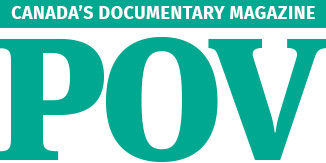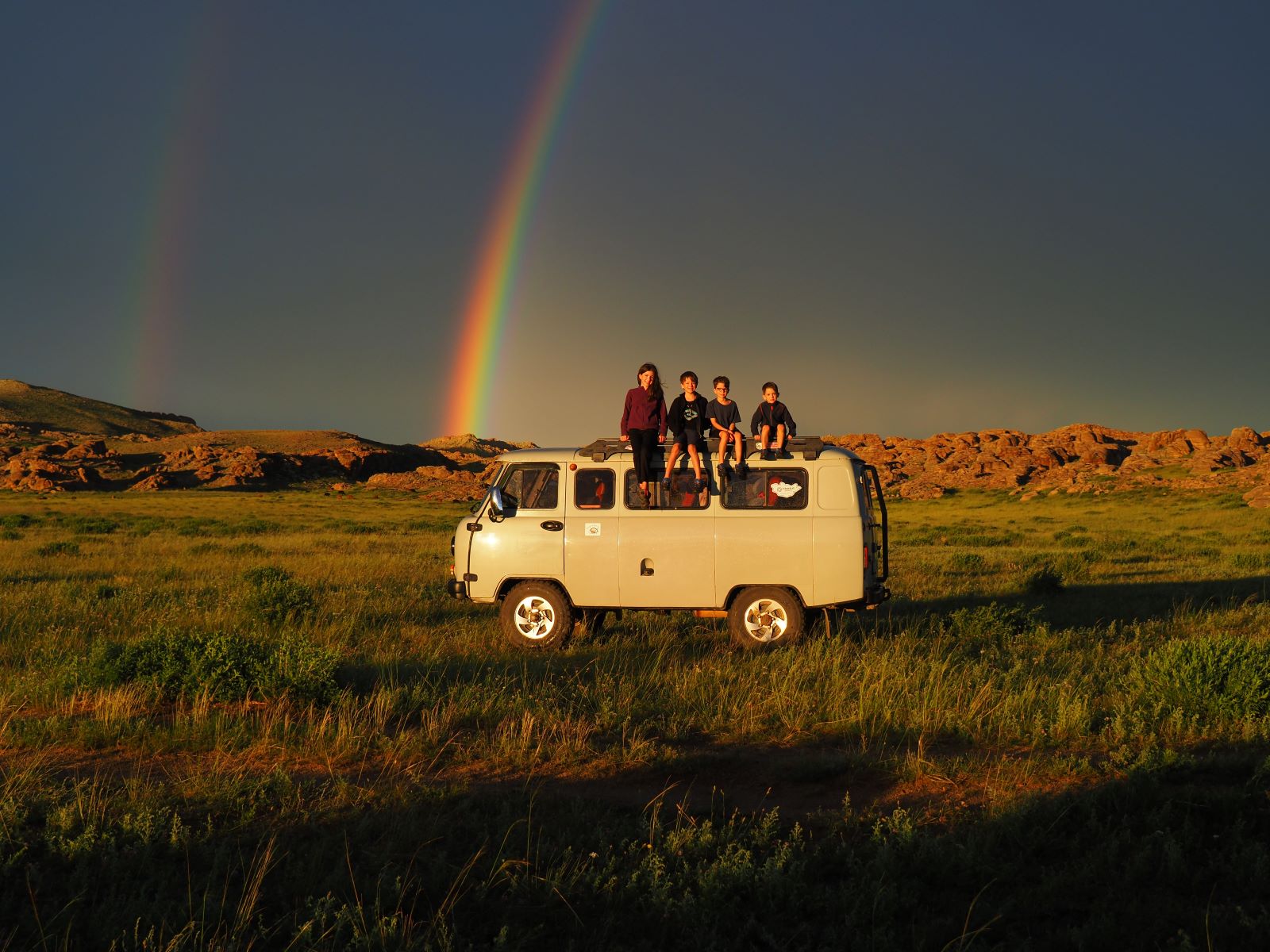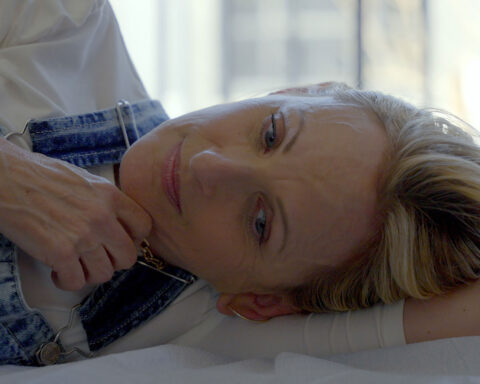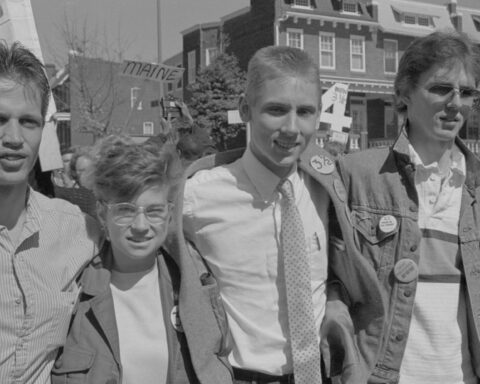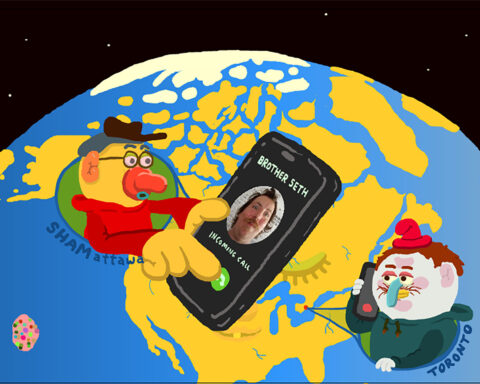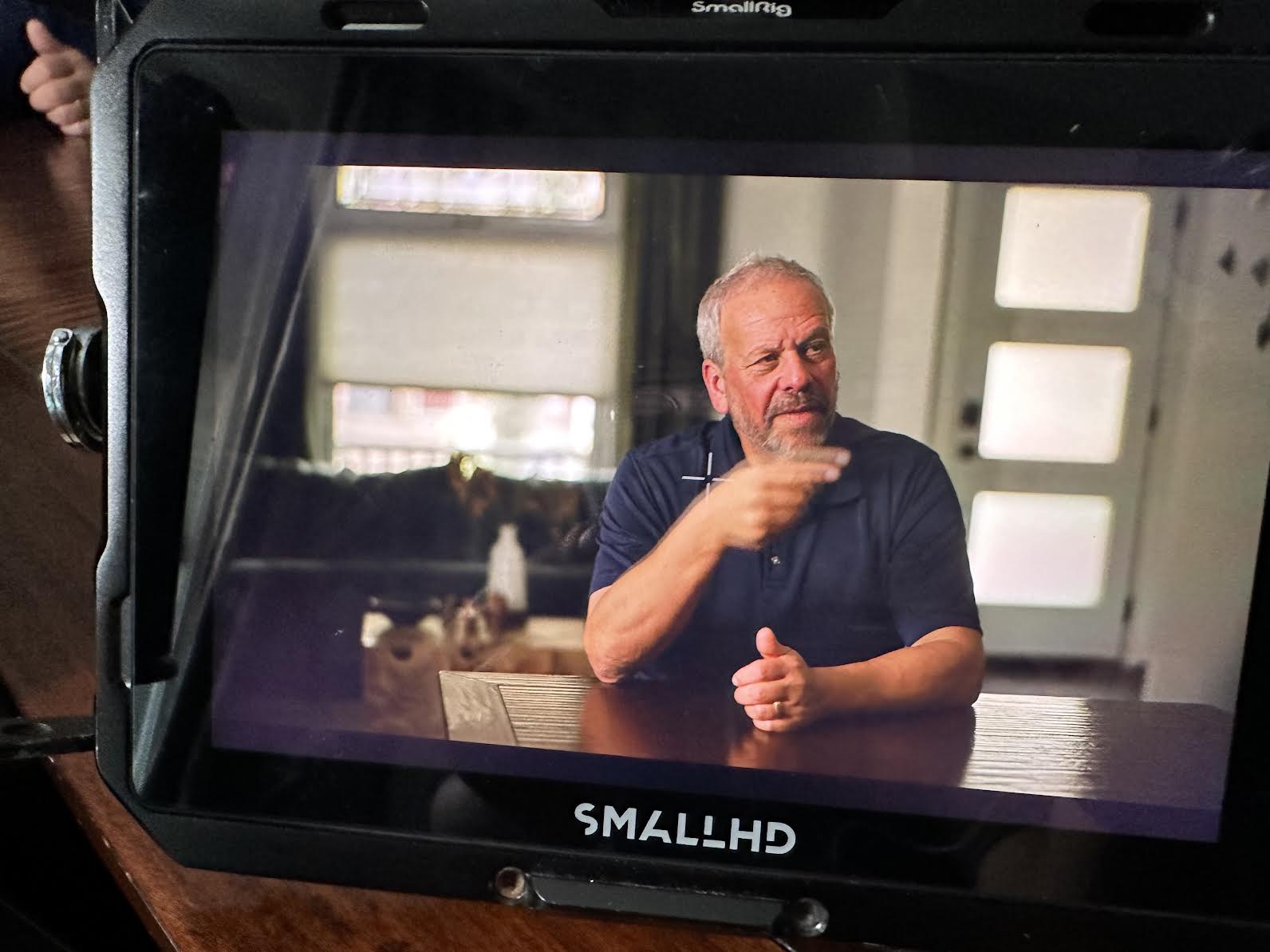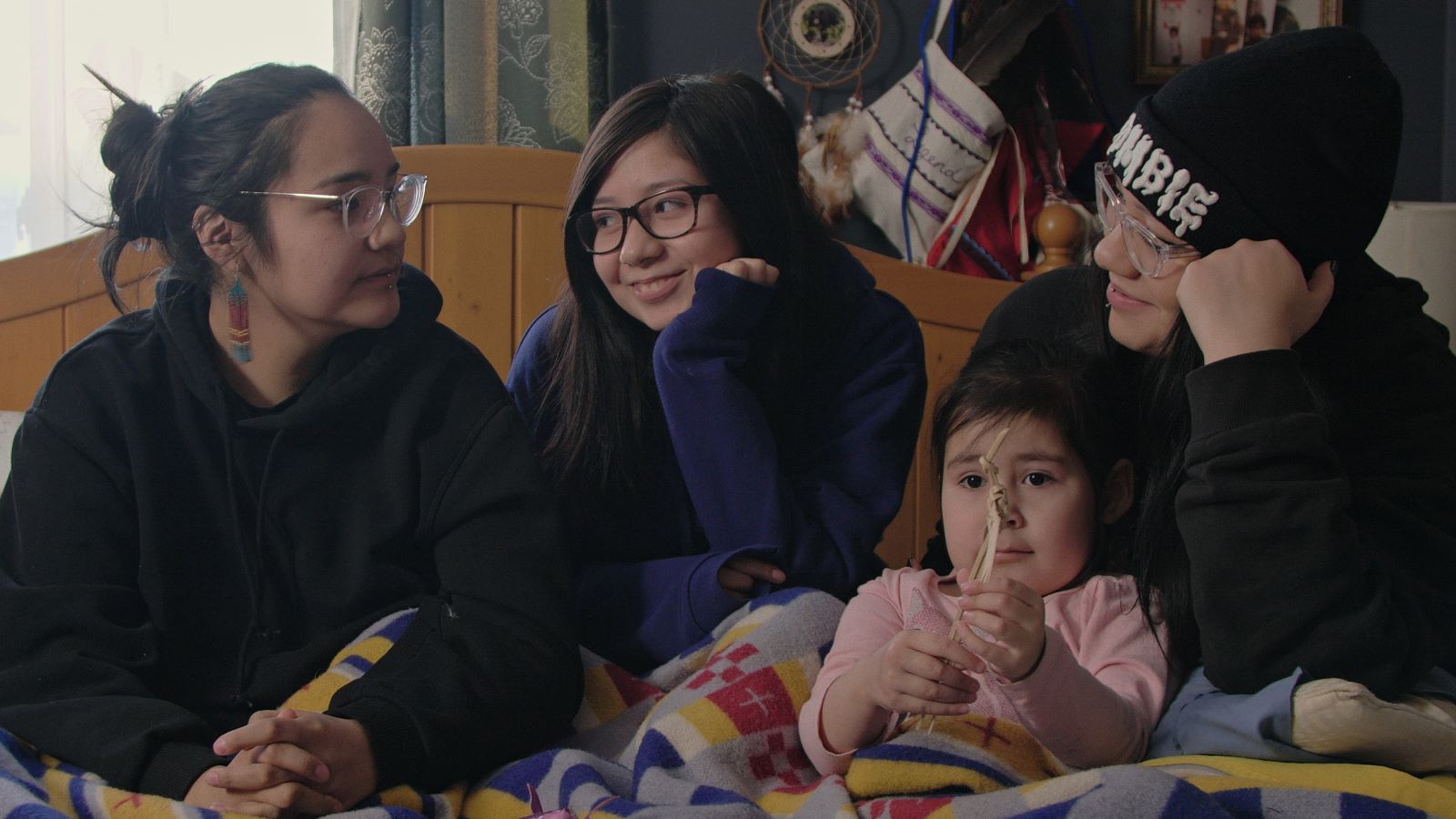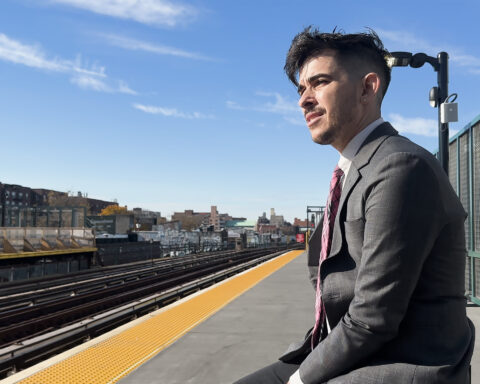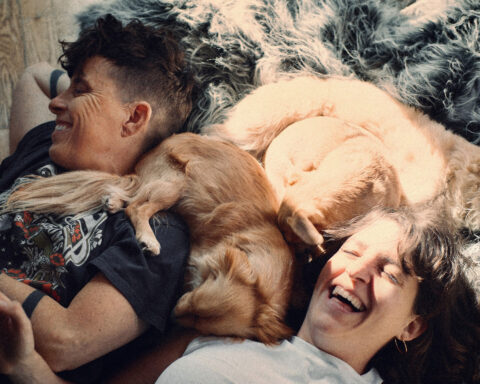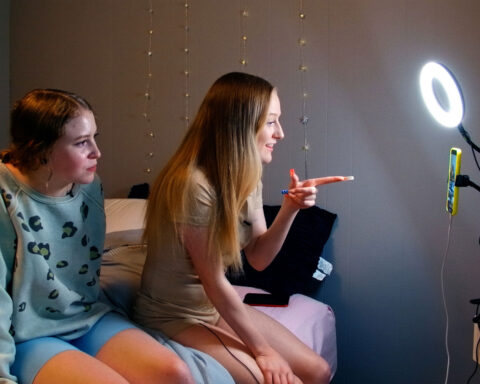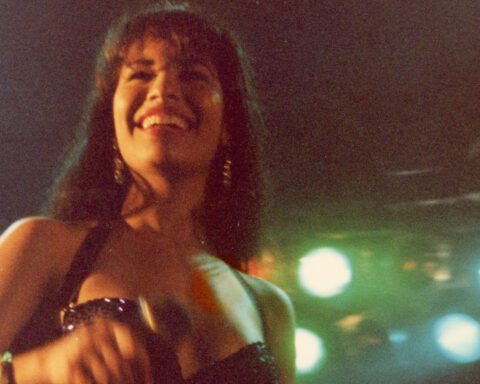A person could spend a lifetime touring the world without being able to enjoy all its sights. For Mia, Colin, and Laurent Pelletier, though, the chance is running out to build their visual memory using all the sights the world has to offer. Blink follows the three kids as their parents, Edith Lemay and Sébastien Pelletier, take them, along with brother Leo, on a world tour. It’s an unexpectedly moving story about cherishing the life before one’s eyes.
The Montreal-based family embarks on a whirlwind tour that’s The Amazing Race meets The Bucket List after three of the four kids are diagnosed with retinitis pigmentosa (RP). The rare and incurable genetic disease means that Mia, Colin, and Laurent will go blind as their retinas break. Edith, refusing to be powerless, decides she can help her children by ensuring they see as many wonders of the world as they can.
Directors Edmund Stenson, in his feature directorial debut, and Daniel Roher (Navalny) chart the family’s extraordinary journey. Edith and Sébastien let the kids pick the experiences they want to see, and Blink observes as they spy elephants and giraffes on safari, catch a sunset in the desert, surf some waves, and drink juice while riding a camel.
If the latter activity makes the adventure seem random, it somewhat is as the family embarked without a formal itinerary. Stenson, speaking with POV via Zoom ahead of Blink’s theatrical release, says that spirit was part of the adventure. “Documentary at the best of times is responding to things at the last minute, but we would know two, three, or four weeks ahead of time where the family was planning on going,” explains Stenson. “Then we decided the locations we wanted to travel with them to and the experiences we wanted to have to tell the bigger story. We were concentrated and thoughtful about the places we decided to go with them.” Stenson says that pretty much all the locations planned for the shoot make it into the film—even the camel!
After co-directing the short Finding Fukue (2018) together and collaborating on docs like Ghosts of Our Forest (2017) and the Oscar-winning Navalny (2022), both of which Roher directed with Stenson serving as editor associate editor, respectively, Stenson says the duo brought distinct perspectives to the collaboration. “I’m focused on the emotional landscape of a film and Daniel is incredibly good at story and pacing,” notes Stenson. “We have this natural complementary aura where I’m going to focus on emotion and Daniel’s going to say, ‘Well, we need to make the audience care about this element here.’”
Stenson says the complicity of their perspectives found inspiration in the locations that complemented the themes and story. “We tried to find a mise-en-scène or metaphorical backdrop for the emotional narrative that was unfolding,” says Stenson. In Egypt, for example, the White Desert, forest, and ancient ruins evoke the expansive history the family soaks up. The meditative quality of the open landscape evokes the introspective nature of their expedition. “We tried to find locations like that had broader universal human themes. Nepal carries the obvious metaphorical weight of literally climbing a mountain. That solved one of the key themes in the film of showing this resilience and the un-believability of seeing a six-year-old boy climb a mountain with a kind of indifference.”
The trip to Nepal inadvertently creates parallels for the kids’ journey. A dog, Bella, decides to join them for the trek up the Annapurna Mountains. They’re heartbroken to part ways when Edith and Sébastien insist it’s time to forge ahead. But when the kids meet some guide dogs back in Montreal, the connection they make resonates with the dogs that will guide them just as Bella chaperoned them up the mountain.
While the diagnosis serves as the catalyst for the journey, Blink doesn’t get too technical with the details of RP. The film avoids talking heads giving the rundown of what the kids face. Instead, Stenson and Roher focus on the present tense as the family travels the world. “People see and experience the world in a variety of ways,” explains Stenson. “We didn’t feel it was the right approach to become overly technical or overly specific because we risked doing a massive injustice to the visually impaired community and to the value of their stories and the way that they would tell their stories.”
At the same time, Blink looks beyond the travelogue trope. The film instead offers an experiential odyssey of lives in transition as the family reimagines the life ahead.
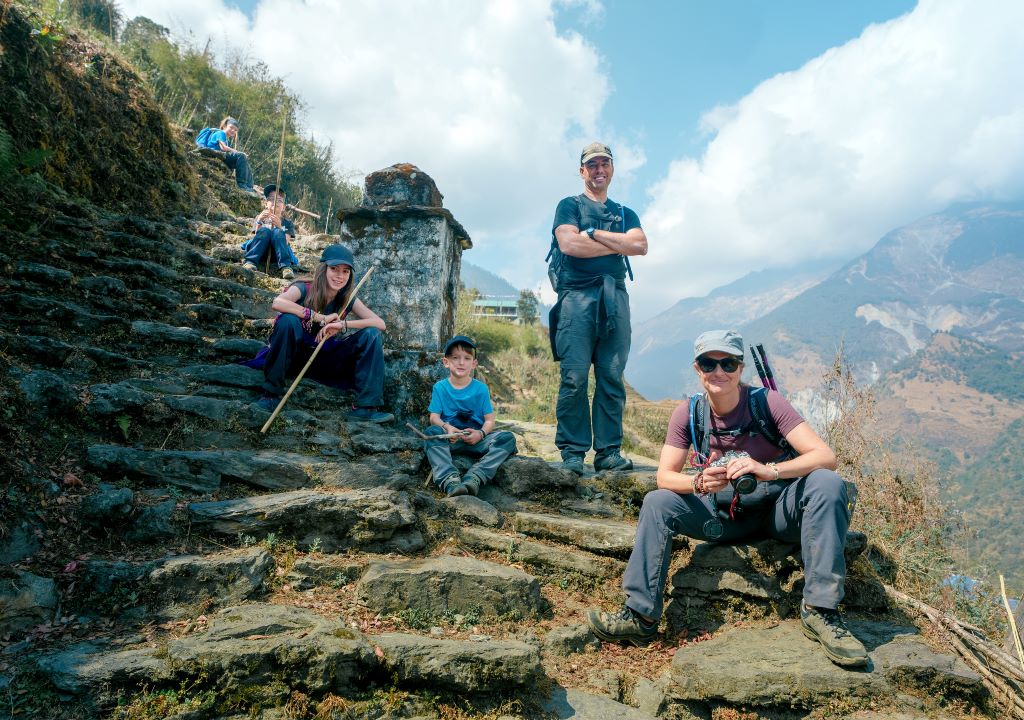
Stenson observes that the travelogue offers the backdrop for the action, but, thematically, searches for universal truth in the family’s story. “Any human being has an idea of what the future looks like, but that idea is never what corresponds to the reality. We saw in that family story a much more resonant story about how the kind of person you are is often defined by the decisions you make with regards to the future. That really touched us.”
Stenson says that he and Roher spent lots of time getting to know the kids and building a relationship before shooting. That time helped them navigate the ethical considerations of making a film with minors. But in building relationships with the kids, the filmmakers were also capturing a journey for themselves. The camera has an intimate relationship with Mia, Colin, Laurent, and Leo, seeing the world at a child’s eye level while observing the raw emotions—joy, awe, excitement, heartache, frustration, fear—along the way.
“We talked a lot about keeping the camera as low as possible, as often as possible, and making the audience feel like they were part of the family. But also that they were experiencing a sense of wonder and joy that the kids did,” says Stenson. “For us, that was also part of the process. We hadn’t been to the Amazon. We hadn’t traveled to Nepal and climbed a mountain. It was also a matter of naturally capturing a filmmaker’s wonder and joy in seeing those things.” Blink frequently lets the visual power of the landscapes and locales speak for themselves. The film mirrors Edith’s desire to let her kids explore the vastness of their surroundings.
Moreover, a film that favours visual language, rather than talking heads and interviews (i.e.: audio), offers a unique complexity entailed in sharing a story in which people experience vision loss. In consideration of that facet, Stenson says that he and Roher collaborated with RP consultant Jaimee Kadish on audio descriptions. Kadish, who is in more advanced stages of retinitis pigmentosa, helped to convey the experience authentically for all audiences. “It was key for us to make sure the audio description helped our visually impaired audiences across the spectrum experience the film in as honest and emotionally rich way as possible,” says Stenson.
While the film’s accessibility means that the kids and others like them will be able to experience it in the years to come, it also raises a question that’s at the heart of documentary ethics as the directors observe this transformative journey. While capturing so many highs and lows with children, moreover, Stenson says he and Roher were in constant conversation with Lemay and Pelletier to check their comfort zones “I’ll be honest: when Daniel and I were asking slightly more difficult questions, I always had a lump in my heart. You are terrified as a documentary director, even with adult subjects, of pushing them into emotional territory. We are not therapists. We don’t have the right to be,” says Stenson.
The director says that sometimes it was a matter of consulting the parents about the best way to broach a topic with the kids. For example, Stenson might ask Edith and Sébastien about how to frame a question for Leo about his experience on the trip as the only child who isn’t facing vision loss. Alternatively, Stenson says it was a matter of reconsidering if such questions were even respectful to ask.
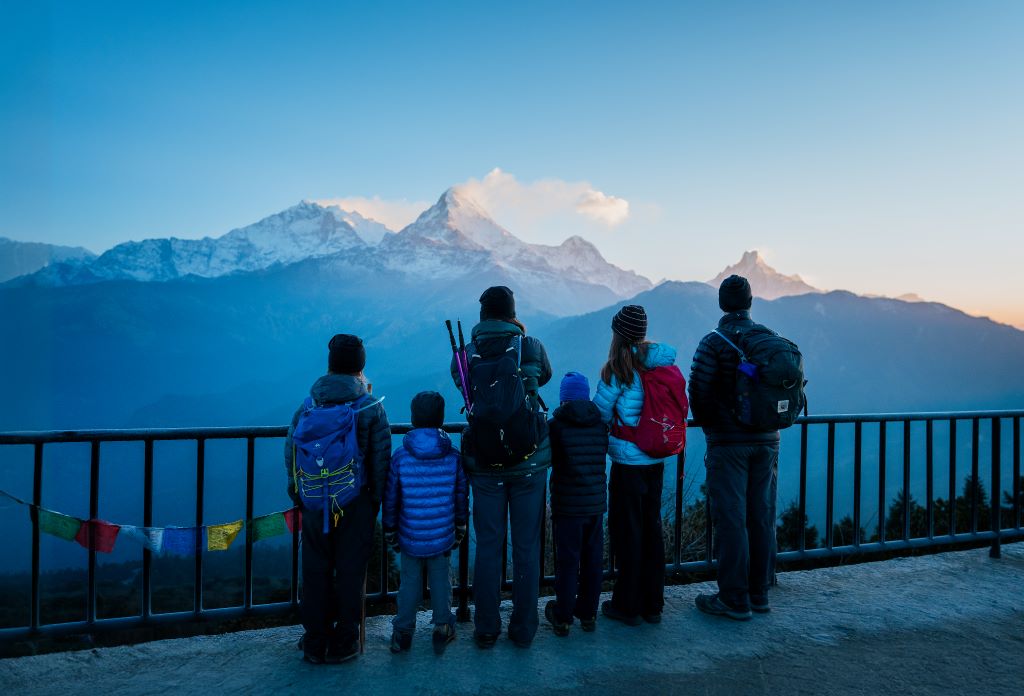
“Whenever there was that difficulty, it became purely collaborative,” notes Stenson. “To do so otherwise would leave these kids with feelings they aren’t asked to give, or to push them into feeling something.”
In doing so, though, the process prepares the family to deal with situations as they unfold on the trip. Blink recognizes how life has no itinerary, and the family has to roll with developments that aren’t part of the plan. For example, a stop in Ecuador hits an unexpected snag when the family takes a gondola ride. The line breaks down and leaves the family stranded high above the ground for hours. It’s a defining sequence in Blink and the leg of the trip that receives the fullest story beat. Ironically, Stenson says production wasn’t even with them on that leg of the journey.
The director remembers getting an emergency call from Sébastien from Ecuador a week before they were set to join them for production. Stenson says he coordinated a crew to climb the mountain and get footage on the ground in Ecuador as firefighters undertook a rescue mission. The footage in the car, meanwhile, comes courtesy of Edith, who captured her kids’ growing anxiety over being trapped overnight without food, water, or facilities as the gondola cooled with the setting sun. There are many tears as Sébastien calls for help and receives little more than an apathetic “whoops!” from staff on the ground before they hang up on him.
Stenson says it was only once his editor brought the scene of the 10-hour ordeal together that he realised how much it spoke to Blink’s themes. “We saw, on a simplistic level, that this is a dramatically tense scene in which a family goes through a very difficult process and shows resilience and strength,” he observes. “But there’s a sense in which this scene anticipates the future. There’s a broad sense of the grief and the unknowing that we all feel with that future.”
The director, who also has an extensive body of work as an editor, says it was a productive experience working with editors Ryan Mullins (Yintah) and Miranda Yousef (Phoenix Rising) after getting his hands on a scene or two to give them a sense of direction. “I found it incredibly liberating because I got to see the second perspective on the footage and to experience the world through two parents—actually Daniel became a parent whilst making this film, too. I’m not a parent, but our two editors were a father and a mother,” Stenson says. “So we got this rich parental perspective where things would touch them in a way it didn’t necessarily touch us or things would bother them in a way that it didn’t bother us. This rich parental perspective, I think, is the foundation of the film.”
This current of familial love that drives the story makes Blink an unexpectedly touching journey. It’s ultimately a story about the selflessness with which parents prepare their children. Edith and Sébastien drop everything for their kids when they realise the clock is ticking.
Stenson says that the film team was constantly taking stock of the dynamics between the families and reflecting upon their own relationships throughout production. “What my parents gave to me was a compassion and an emotionally-attentive attitude towards the world that helped me get close to this family and helped me tell this story in as authentic a way as possible,” Stenson says. “I get emotional thinking about it. That’s what I carry around with me” I was brought up in an environment where I could be open and respectful and attentive to others, and I really thank my parents and love them for that.”

